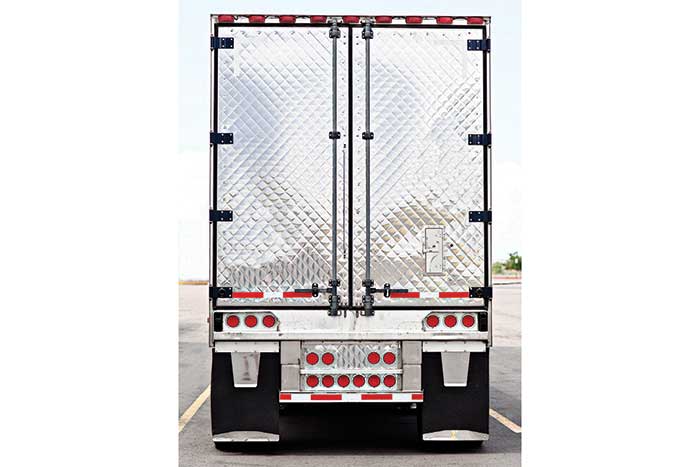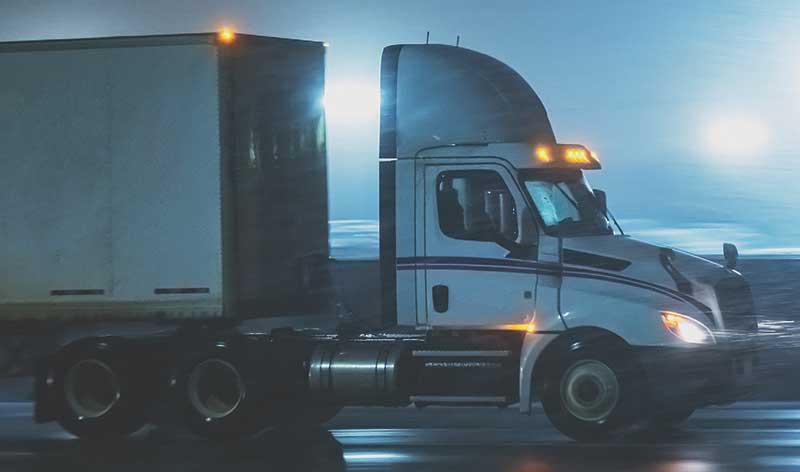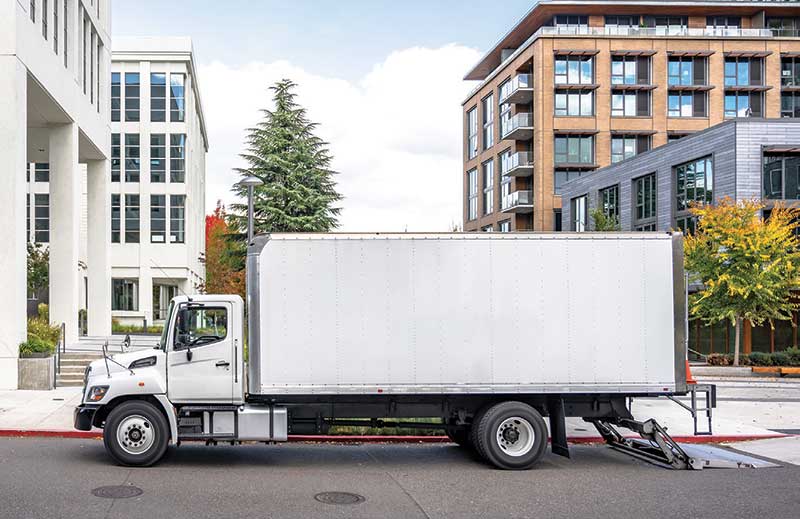Top 50 Trucking Companies 2023: Is this normal?
As the $830 billion trucking industry prepares for what could be the first full “normal” year since the pandemic caused tidal waves in supply/demand cycles, the “best of the best” are concentrating on strategy, operations and execution. Our trucking correspondent examines what’s ahead for trucking in 2023.
This year’s annual listing of the nation’s top 50 trucking companies is a “who’s who” of the best in the industry. Ours is a compilation of the largest in both the truckload and less-than-truckload (LTL) carriers. To grow this big means they’re largely the best in service across the board—safety, service, culture, diversification, innovation, strategy and execution.
So, we thought it would be interesting to ask the chief executives of a few of these companies what they thought were common denominators when they look at the competitive landscape in trucking in 2023.
“Service stands out, but it’s also credibility,” says Chuck Hammel, president of Pitt Ohio, No. 15 by revenue on the LM list of LTL carriers. “It’s also a great culture and a caring attitude toward the employee, customer and community.”
According to Derek Leathers, chairman, CEO and president of Werner Enterprises, the No. 6 on this year’s TL carrier list, companies with a keen sense of purpose and core values can drive success through making them a central component of their overall strategy. “Honing in on a durable and multifaceted long-term strategy provides a sound blueprint to not only weather an economic storm or other challenges, but to thrive during times of uncertainty.”
“Diversification,” said Greg Orr, president of CFI, a major truckload carrier. “Not just in customers, but in service offerings. There are a lot of things that can help diversify a carrier. In fact, the top four or five truckload carriers have all dipped their toes into a different space the last five years or so.”
Mark Rourke, president and CEO of Schneider, No. 4 on the TL list, agrees with Orr’s assessment. “When we look at ourselves and our best competitors, what’s emerging is increased depth and diversification of services. Everybody has their mix of services.”

As an example, when Rourke first began in trucking more than 25 years ago, Schneider got approximately 90% of its revenue over the road. Now it’s more a 50/50 split between over-the-road, dedicated, intermodal rail and other modes, he says.
When asked what his common denominators were for top operators, trucking analyst Satish Jindel, principal of SJ Consulting Group, which compiles our annual top trucking lists, said discipline and pricing. “There’s a greater focus on getting paid properly for what they’re hauling.”
So, as the $830 billion trucking industry prepares for what could be the first full “normal” year since the pandemic caused tidal waves in supply and demand cycles, let’s examine what’s ahead for the best of the trucking industry in 2023.
Top 25 LTL Carriers ranked by 2022 revenues (Including fuel surcharges)
Rank | Carrier name | 2021 Revenue | 2022 Revenue | YoY % Change2021-2022 |
1 | $8,594 | $10,186 | 18.5% | |
2 | $5,177 | $6,177 | 19.3% | |
3 | $5,078 | $5,245 | 3.3% | |
4 | $4,192 | $4,645 | 10.8% | |
5 | $3,783 | $4,405 | 16.4% | |
6 | $3,179 | $4,023 | 26.6% | |
7 | $2,518 | $2,951 | 17.2% | |
8 | $2,427 | $2,864 | 18.0% | |
9 | $2,289 | $2,792 | 22.0% | |
10 | $1,476 | $1,741 | 18.0% | |
11 | $1,093 | $1,302 | 19.2% | |
12 | $1,046 | $1,236 | 18.2% | |
13 | $863 | $1,056 | 22.4% | |
14 | $831 | $969 | 16.6% | |
15 | $792 | $912 | 15.2% | |
16 | $653 | $874 | 33.8% | |
17 | $481 | $568 | 18.1% | |
18 | $380 | $389 | 2.3% | |
19 | $430 | $386 | -10.2% | |
20 | $284 | $338 | 19.0% | |
21 | $230 | $256 | 11.2% | |
22 | $118 | $152 | 28.8% | |
23 | $137 | $152 | 10.9% | |
24 | $117 | $131 | 12.0% | |
25 | $114 | $130 | 14.0% | |
Total Top 25 LTL Carriers | $46,282 | $53,881 | 16.4% | |
All Other Carriers* | $4,420 | $4,841 | 9.5% | |
Total LTL Market | $50,702 | $58,722 | 15.8% | |
*SJC estimates Prepared by SJ Consulting Group, Inc.
From the top
First and foremost, the search for qualified drivers continues, with demographics working against most carriers. However, there are signs that sharp increases in pay the last few years may be eating into a shortage that’s estimated at 83,000 drivers by the American Trucking Associations.
Second, the merger-and-acquisition rush may not match 2022’s madness, but several large truckload carriers may choose to grow by acquisition instead of organically.
Third, carriers feeling the need to replace aging equipment after COVID-related constraints limited their replacement tractor purchases the past two years may find the Class 8 market returning to normalcy.
“Service stands out, but it’s
also credibility…a great
culture and a caring attitude
toward the employee, customer
and community.”
— Chuck Hammel,
president of Pitt Ohio
In the meantime, all of this is occurring as the sectors of the market work to perfect autonomous vehicles as well as those propelled by fuels other than diesel. This is part of the Biden administration’s push to meet a stated goal of shifting all new medium- and heavy-duty vehicle sales to zero-emission vehicles by 2040. The question remains: How realistic is that goal?
The economic outlook
Trucking is what economists call “a derived demand industry.” That means trucking can’t create economic activity much beyond the actual hauling of freight—which largely depends on the health of the economy.
Reading economic tea leaves is always a fool’s mission. If it were all that easy and accurate, top executives joke to one another, no one would be working in the thin-margin business of trucking.
“Who knows?” Hammel says when asked for his best economic outlook in this topsy-turvy time. “The economists sure seem to be puzzled as well.”
Others are a bit more opinionated in their economic forecasts. “I’m optimistic that by mid-year, maybe sooner, there will be a more normal cycle of replenishment as we turn through that excess inventory, whether that’s industrial or consumer,” says Schneider’s Rourke says.
Others agreed. “The spring push is around the corner,” says CFI’s Orr. “You will see things improve as inventories come down. The back half of the year will be a lot better than the first half.”
“What we expect is that through the first two quarters of this year we’ll see this softness as a result of freight that’s already moved, and then we start to move back into a more normal cycle,” said David Jackson, president and CEO of the largest truckload carrier, Knight-Swift, during a recent conference call.
Freight movement on U.S. roads, rails and through ports has slowed since the middle of 2022. That ended a boom in shipping during the pandemic, as retailers rushed goods through jammed logistics networks to meet strong consumer demand.
The Cass Freight Index, which measures domestic trucking and rail shipments in the United States, fell 3.3% from November to December. That was the fourth straight month-to-month decline. For all of 2022, the index ended down 3.9% from December 2021.
Top 25 Truckload Carriers Ranked by 2022 revenues (Including fuel surcharges)
Rank | Carrier name | 2021 Revenue | 2022 Revenue | YoY % Change2021-2022 |
1 | $4,098 | $4,531 | 10.6% | |
2 | $3,374 | $4,461 | 32.2% | |
3 | $2,932 | $3,081 | 5.1% | |
4 | $2,201 | $2,787 | 26.6% | |
5 | $2,207 | $2,605 | 18.0% | |
6 | $2,023 | $2,402 | 18.7% | |
7 | $1,851 | $2,300 | 24.3% | |
8 | $1,586 | $1,853 | 16.8% | |
9 | $1,568 | $1,825 | 16.4% | |
10 | $1,457 | $1,786 | 22.6% | |
11 | $1,304 | $1,525 | 16.9% | |
12 | $1,249 | $1,398 | 12.0% | |
13 | $993 | $1,209 | 21.8% | |
14 | $977 | $1,138 | 16.5% | |
15 | $982 | $1,104 | 12.4% | |
16 | $855 | $1,100 | 28.7% | |
17 | $875 | $985 | 12.6% | |
18 | $607 | $968 | 59.4% | |
19 | $917 | $953 | 3.9% | |
20 | $726 | $930 | 28.0% | |
21 | $702 | $841 | 19.7% | |
22 | $658 | $821 | 24.8% | |
23 | $623 | $752 | 20.6% | |
24 | $665 | $750 | 12.7% | |
25 | $570 | $735 | 28.9% | |
Total For Top 25 Carriers | $36,000 | $42,840 | 18.9% | |
Prepared by SJ Consulting Group, Inc.
Driver picture improving?
For the first time in at least the last decade, when the subject of finding compliant, available drivers was broached, trucking executives didn’t flinch. Whether it’s improved pay—Walmart’s private fleet drivers earn around $110,000 a year if experienced—or simply greater exposure to the driver shortage, carriers say they’re finding a better supply of applicants.
“We’ve all benefited from publicity of the critical nature of supply chains and the essential nature of truck drivers,” says Rourke, noting that Schneider has raised pay by nearly 20% the past two years for most of its 12,000 company drivers. “The nature and stature of the driving position has been elevated, and we’re seeing a better supply of drivers entering the industry.”
Werner’s Leathers adds: “Albeit still a challenging market, the pressure to recruit and retain quality drivers has abated somewhat.”
Still, some warn of demographics working against the industry. Average age of a Teamster-covered driver is around 59. Most non-union companies trend younger, but only by a few years. “The more tenured drivers will face retirement in the next one to five years,” says Orr. “While we’re bringing on younger drivers, it’s not at the same pace to replace those retirements.”
One longer-term worry for carriers may be the fact that as the newly minted $1.2 trillion infrastructure program begins to be spent, construction jobs will outbid trucking companies for a similar pool of drivers. “The economy will come around, and so will finding drivers,” adds Hammel. “It seems that the problem is here to stay.”

Bullish on LTL
Darren Hawkins, CEO of Yellow Corp., which is transforming itself from three regional and one national carrier into a multi-regional LTL carrier with a footprint of more than 280 nationwide terminals, says that existing LTL carriers with established hub-and-spoke networks will always command a presence. Yellow is the third-largest LTL concern.
While others are exploring new and different revenue streams, Hawkins believes that Yellow is concentrating on doing old fashioned LTL freight better and more efficiently than ever.
That belief recently caused Hawkins to exclaim: “I’m bullish on America, and I’m bullish on LTL. I think the reason so many people are interested in LTL is the barriers to entry are so high. Everyone who follows and is part of the industry is aware of that. We’ve just simply got a real estate portfolio that can’t be replicated.”
Hawkins adds that we should expect an economic rebound combined with pent-up demand next year for LTL freight services, which should make 2024 a banner year.
“We’ve got tremendous opportunity right here in front of us at Yellow, and that’s what we’re wholly focused on,” says Hawkins. “And we’re looking forward to what 2023 is going to bring, especially after the nice progress we had in 2022 of delivering improvements that we hadn’t seen in over 16 years. So, it’s an exciting time to be at Yellow.”
What’s your biggest fear?
Several executives of top-flight trucking companies were candidly asked about their biggest fears. It was not a calamitous economy. It wasn’t lack of availability of new equipment. And it wasn’t cost and availability of diesel fuel, still stubbornly priced just below $5 a gallon.
In fact, some top carrier executives confided to LM that their biggest fear is being hit with a so-called “nuclear verdict” in a truck accident negligence case. Ever since a highly publicized truck accident involving actor Tracy Morgan of Saturday Night Live fame and a Walmart truck in New Jersey in 2014, trucking executives admit to being scared straight.
Morgan, who survived serious injuries, settled out of court for an estimated $90 million. But hundreds of other far-less publicized cases involving heavy trucks are routinely settled for tens of millions of dollars.
“The biggest thing that keeps me awake at night is what’s happening with these verdicts in the courts,” says Pitt Ohio’s Hammel. “Even when it’s not the fault of the driver, just being involved is extremely costly. And it seems to be getting worse.
CFI’s Orr agrees: “These nuclear warrants are game-changers. One accident can shut you down. The motoring public are not professionals, no matter the amount of training you give.”
The key, insiders and executives say, is for carriers to partner with a great insurance group. “Biggest key is don’t underestimate the power of a professional driver,” Orr says. “We stock our trucks with every piece of safety equipment, including cameras on trucks so we can validate that we’re not the responsible party. The training piece is ultimately the key. Continuing education is vital. Safety is not an option.”

Advice for shippers
Carrier executives emphasized that the best way for shippers to aid in efficiency is to form long-term strategic partnerships with a group of core carriers to handle their ground freight needs.
“Many shippers do understand the value and competitive advantage that’s created by partnering with carriers who offer reliable, on-time service and low incidents of exceptions and claims, as well as the competitive advantage that can be created by working with a carrier that truly acts as an extension of their business,” says Kent Williams, executive vice president of sales and marketing at Averitt, the nation’s No. 11 LTL carrier.
“In previous cycles, there always seemed to be a carrier or two that would react to slowdowns by cutting rates to unsustainable levels in an effort to replace declining shipments due to softness in the economy,” adds Williams. “Most of those carriers are no longer in business.”

Article Topics
Knight-Swift News & Resources
Knight-Swift’s acquisition of U.S. Xpress is made official Top 50 Trucking Companies 2023: Is this normal? Biggest gets bigger: Knight-Swift buying USX for $808 million in huge TL deal Knight-Swift further expands LTL presence, with acquisition of MME Knight-Swift acquires AAA Cooper, enters LTL market DAT and Knight-Swift team up for Q1 rate forecasting pilot program Knight-Swift to add 400 trucks, drivers with Abilene tuck-in acquisition More Knight-SwiftLatest in Logistics
Diesel back over $4 a gallon; Mideast tensions, other worries cited Four U.S. railroads file challenges against FRA’s two-person crew mandate, says report XPO opens up three new services acquired through auction of Yellow’s properties and assets FTR’s Trucking Conditions Index weakens, due to fuel price gains U.S. rail carload and intermodal volumes are mixed, for week ending April 6, reports AAR LM Podcast Series: Examining the freight railroad and intermodal markets with Tony Hatch Supply Chain Stability Index sees ‘Tremendous Improvement’ in 2023 More LogisticsSubscribe to Logistics Management Magazine

Find out what the world's most innovative companies are doing to improve productivity in their plants and distribution centers.
Start your FREE subscription today.
April 2023 Logistics Management

Latest Resources
















